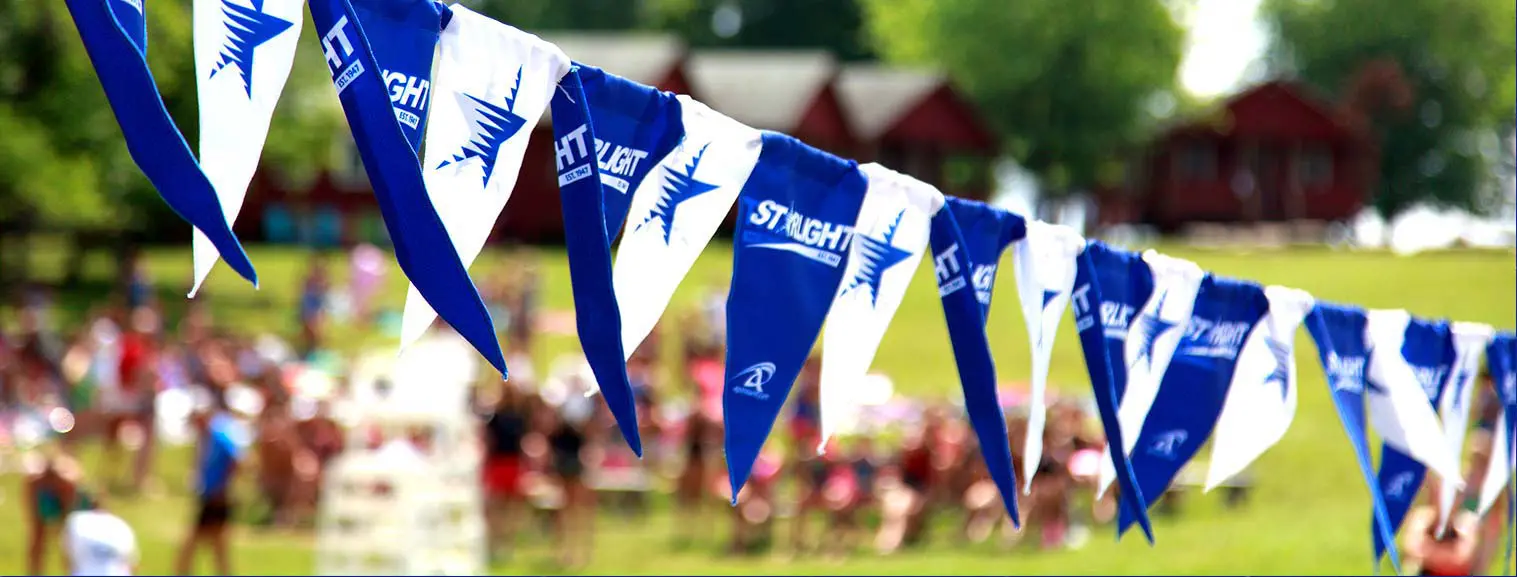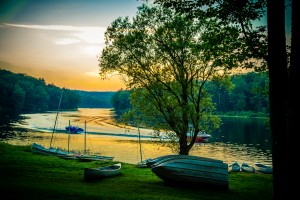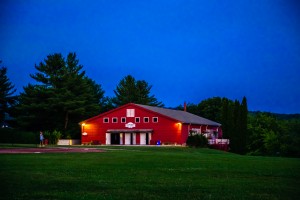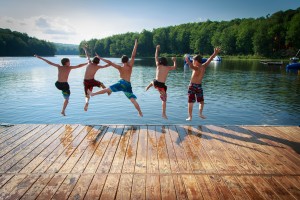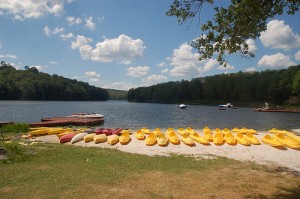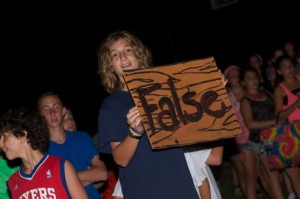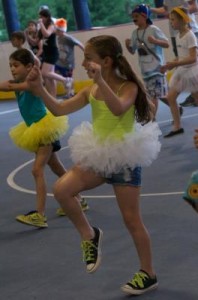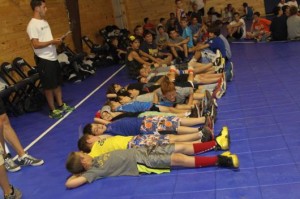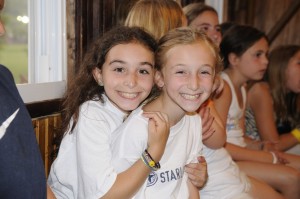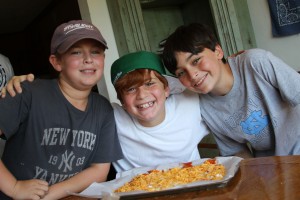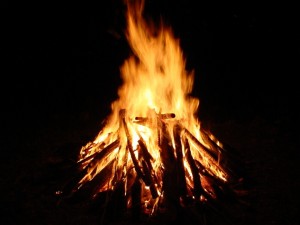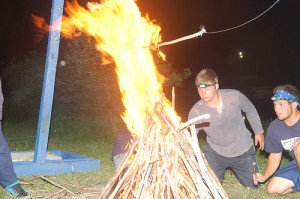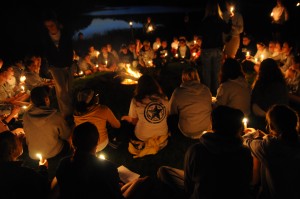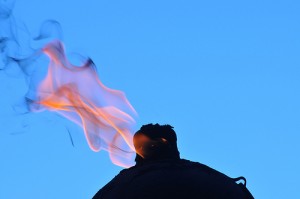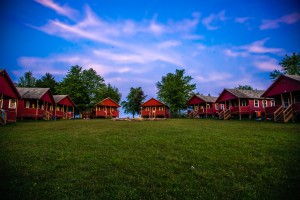 It’s hard to believe that another summer is almost half over. It seems like just yesterday that campers were arriving, excited for another summer. Time passes so quickly at summer camp that it’s sometimes impossible to not miss some things. But there are certain things that, no matter how busy, chaotic, or crazy things get at camp, remind us of camp and are a big part of what it’s all about.
It’s hard to believe that another summer is almost half over. It seems like just yesterday that campers were arriving, excited for another summer. Time passes so quickly at summer camp that it’s sometimes impossible to not miss some things. But there are certain things that, no matter how busy, chaotic, or crazy things get at camp, remind us of camp and are a big part of what it’s all about.
1. Campfires—Every camp’s campfire has a unique significance to it. Campfire traditions, songs, and activities vary from camp to camp but one theme is consistent from camp to camp: the campfire has a sacred relevance and, as such, is a very special event at camp. So special, in fact, that the campfire is symbolic of summer camp itself. The fire embodies camp life, and the smell of burning embers raises an immediate reminder of sylvanian settings in which camps are located.
2. S’mores—What’s a campfire without s’mores? Anyone and everyone who has ever been to camp craves the gooey delight of melted chocolate and marshmallows between two graham crackers. S’mores are so distinct to camp that biting into one instantly harkens memories of camp.
3. Sing Alongs—Sure, karaoke is a popular activity for get togethers. But there is nothing more harmonious than an entire camp—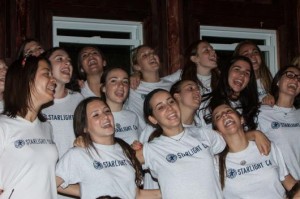 counselors too!—singing their camp’s favorite tunes together. Camp sing alongs are more than just time spent together singing songs, however. They’re a way of bringing everyone together to celebrate the place that has brought them all together.
counselors too!—singing their camp’s favorite tunes together. Camp sing alongs are more than just time spent together singing songs, however. They’re a way of bringing everyone together to celebrate the place that has brought them all together.
4. Bunks/Cabins—As the saying goes, ‘If only walls could talk…’ And, oh, the stories so many summer camp bunks/cabins could tell. Bunks/Cabins are more than just places where campers and their counselors sleep at night. Bunks/Cabins are facilities in which campers become families. They are also places in which the vast size of sleepaway camps shrink to an intimate setting in which friendships are nurtured and memories are made. Each bunk/cabin family is unique, with its own jokes, songs, traditions, etc.
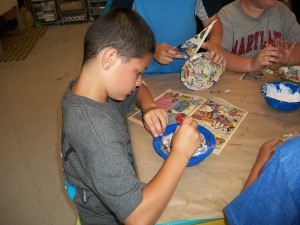 5. Arts & Crafts—According to the American Camp Association, Arts & Crafts is one of the five most popular activities at camp, and for good reason. Who wouldn’t want to spend a portion of each day in an area stocked with beads, lanyard, glitter, paint, glue, markers, scissors, and just about any other craft supply one can dream up? The possibilities are endless in Arts & Crafts. The relaxing atmosphere gives campers opportunity to decompress and reflect while still being social. Arts & Crafts is an activity that allows campers to spend time with their friends.
5. Arts & Crafts—According to the American Camp Association, Arts & Crafts is one of the five most popular activities at camp, and for good reason. Who wouldn’t want to spend a portion of each day in an area stocked with beads, lanyard, glitter, paint, glue, markers, scissors, and just about any other craft supply one can dream up? The possibilities are endless in Arts & Crafts. The relaxing atmosphere gives campers opportunity to decompress and reflect while still being social. Arts & Crafts is an activity that allows campers to spend time with their friends.
6. Bugle Calls/Bells—There has to be some way to move campers through their program day at camp. Whether it’s bugles or bells, campers know instantly what each unique sound is telling them to do from waking up in the morning to turning out the lights at night, and everything in between.
7. Camp Shows—Those who are not familiar with camp may wonder what makes camp shows different from other types of shows.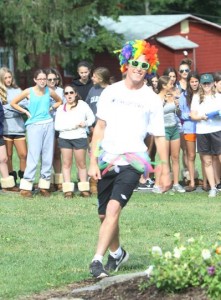 Anyone who has ever been involved in a production that goes from auditions to performance complete with full sets and makeup in a week or less knows that this is precisely what makes camp shows a camp entity all unto their own.
Anyone who has ever been involved in a production that goes from auditions to performance complete with full sets and makeup in a week or less knows that this is precisely what makes camp shows a camp entity all unto their own.
8. Crazy Wardrobe Choices—We mean C-R-A-Z-Y—as in more is definitely more when it comes to showing spirit or “dressing up” for a special camp occasions. In fact, camp is probably the only place at which one is complimented for arriving at a function wearing body paint and/or temporary tattoos, bright colors, a tutu, crazy sunglasses or hats, a wig (or two) and mismatched socks.



